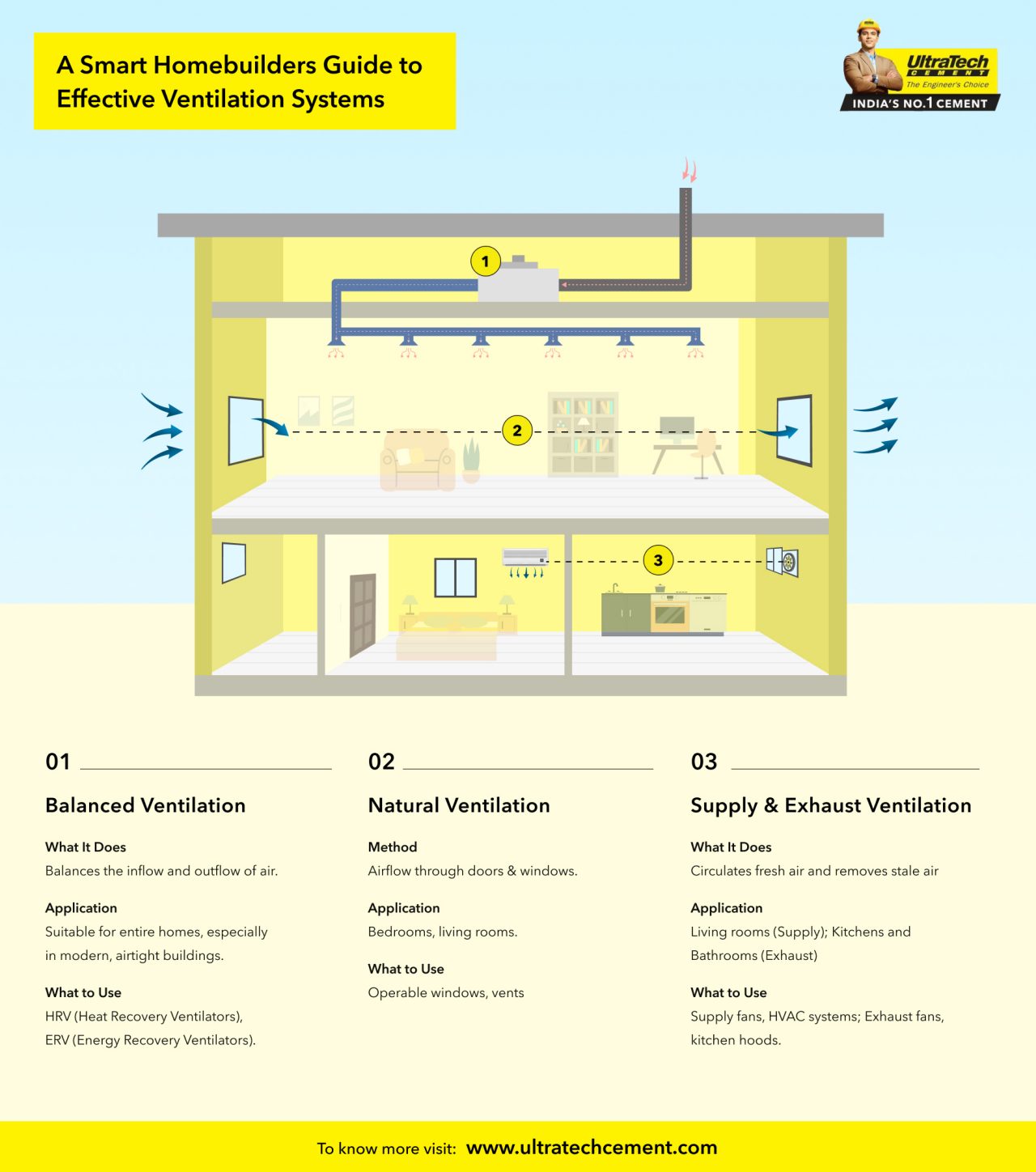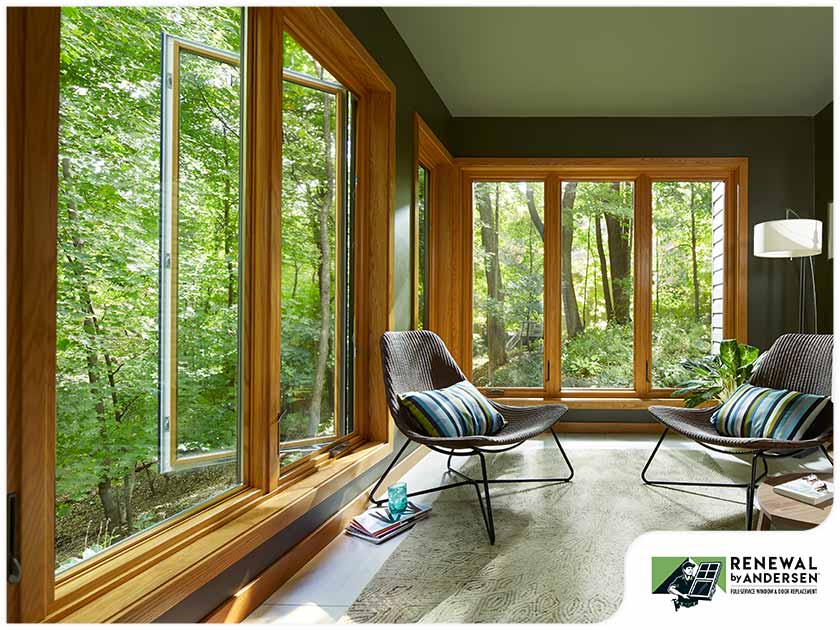The Hidden Health Risks of Poor Home Ventilation Melbourne
Wiki Article
Checking Out Innovative Solutions for Ideal Home Air Flow Solutions
Home ventilation plays an essential duty in preserving health and wellness and convenience within living areas. With advancements in modern technology, ingenious remedies are emerging to optimize these systems. Smart ventilation, power recovery ventilators, and advanced purification are improving how air top quality is handled - Home Ventilation Melbourne. The combination of these modern technologies raises concerns concerning their effectiveness and flexibility in different home atmospheres. What implications do these advancements hold for future living criteria?The Relevance of Home Air Flow for Health and Comfort
Although usually neglected, home ventilation plays an essential duty in keeping both health and comfort within domestic areas. Appropriate air flow is important for the circulation of fresh air, which helps to thin down interior contaminants such as volatile natural substances, allergens, and odors. Without correct air flow, these pollutants can build up, resulting in respiratory concerns and various other health issue. In addition, reliable air flow adds to managing humidity levels, preventing mold and mildew growth and architectural damages. By guaranteeing a well balanced exchange of air, citizens can delight in a more pleasant interior atmosphere, enhancing total health. Sufficient ventilation can enhance energy effectiveness by reducing the demand for extreme heating or air conditioning, eventually resulting in lower energy expenses and a more lasting living space.Smart Air Flow Solutions: Harnessing Technology for Effectiveness
Smart air flow systems represent a considerable advancement in home air management, leveraging IoT integration for improved control. These systems not just advertise power performance but also provide remote surveillance capacities, permitting customers to optimize their indoor environments perfectly. By taking advantage of modern technology, homeowners can achieve improved air high quality while minimizing power usage.IoT Assimilation Advantages
Just how can IoT assimilation change traditional ventilation systems into very efficient smart services? By including Internet of Things (IoT) technology, air flow systems can attain real-time tracking and control, boosting their operational efficiency. Sensing units positioned throughout a home collect data on air high quality, humidity, and temperature level, permitting automated adjustments based upon current conditions. This immediate responsiveness brings about enhanced indoor air quality and convenience levels. Additionally, IoT-enabled systems can connect with various other wise home devices, developing a natural ecological community that enhances energy usage. Individuals can additionally accessibility and manage their air flow systems remotely via smart devices, offering convenience and raised control. Generally, IoT integration stands for a considerable innovation, bringing knowledge and versatility to traditional air flow practices.Energy Performance Includes
As energy effectiveness comes to be an essential emphasis in modern home layout, progressed air flow systems offer cutting-edge features that considerably minimize power usage. These clever ventilation systems utilize sensing units to check interior air moisture, high quality, and temperature levels, instantly readjusting air movement to keep perfect problems. By using energy recovery ventilators (ERVs), they record and reuse energy from outbound air, reducing home heating and cooling needs. Variable rate fans even more improve performance by readjusting their operation based upon real-time requirements, protecting against unneeded power waste - Home Ventilation Melbourne. Furthermore, programmable timers and occupancy sensing units assure that air flow operates just when necessary, adding to lower utility costs. Jointly, these functions represent a significant innovation in developing energy-efficient and lasting living settingsRemote Tracking Capabilities
What advantages do remote monitoring capabilities bring to contemporary home ventilation systems? These capabilities enable home owners to track indoor air top quality and system performance in real time, boosting total efficiency. By giving information on temperature level, air, and humidity contaminants, smart ventilation systems allow aggressive modifications, guaranteeing suitable conditions. Furthermore, remote surveillance facilitates upkeep alerts, identifying potential concerns prior to they rise, consequently reducing repair service prices and downtime. Users can access system analytics through mobile applications, permitting hassle-free control even when away from home. This technical combination not just promotes power efficiency but additionally adds to a much healthier living atmosphere. Inevitably, remote tracking capabilities represent a significant improvement in home air flow, lining up with the growing demand for clever home technologies.Power Recuperation Ventilators: Optimizing Energy Financial Savings
Energy healing ventilators (ERVs) play an essential role in enhancing home energy effectiveness via reliable heat exchange. By moving thermal energy between inbound and outbound air, these systems markedly decrease general energy consumption. This cutting-edge technique not just preserves indoor air high quality yet also contributes to lower utility costs.Efficiency of Warmth Exchange
While preserving indoor air top quality is essential for wellness and comfort, the effectiveness of warmth exchange in power healing ventilators (ERVs) plays a vital duty in making best use of energy savings. The primary function of an ERV is to move warm and moisture between incoming and outbound jet stream, which enhances interior problems while reducing power loss. High-efficiency warm exchangers can substantially minimize the tons on heating and cooling systems by recovering energy that would certainly or else be lost. The efficiency of these systems is typically determined by their core temperature level currency exchange rate, which can vary based upon design and materials used. By concentrating on innovative heat exchange innovations, homeowners can improve their air flow systems, causing improved energy efficiency and price reductions in time.Reduced Power Intake
Lowering energy usage is a key advantage of power recuperation ventilators (ERVs), as they efficiently reuse thermal energy from worn down air. By moving heat in between outward bound and incoming jet stream, ERVs lessen the demand for additional heating or cooling, causing considerable power cost savings. This process not just reduces utility expenses however also lessens the environmental impact related to greater power usage. On top of that, ERVs keep constant interior official website air high quality without compromising thermal convenience, producing a balanced living atmosphere. By integrating ERVs into home ventilation systems, homeowners can attain greater power effectiveness, making it possible for a sustainable approach to interior air monitoring while gaining from reduced power costs. Eventually, ERVs represent an engaging service for energy-conscious consumers.Advanced Filtering Technologies for Cleanser Indoor Air
As interior air quality becomes significantly acknowledged as an essential element of wellness and wellness, advanced filtration innovations are becoming essential tools for making certain cleaner atmospheres. These modern technologies include high-efficiency particulate air (HEPA) filters, activated carbon filters, and electrostatic precipitators, each developed to successfully capture air-borne contaminants, irritants, and unstable organic compounds (VOCs) HEPA filters can trap particles as small as 0.3 microns, considerably lowering irritants like allergen and pet dander. Triggered carbon filters master adsorbing odors and chemical vapors, contributing to a fresher interior environment. In addition, electrostatic precipitators make use of electrical costs to remove bits, offering an energy-efficient option. By integrating these innovative filtering systems, home owners can boost interior air high quality and advertise much healthier home.The Duty of Sensors in Maximizing Airflow and Quality
Exactly how can sensing units transform the monitoring of indoor air top quality? Sensors play a vital role in boosting airflow and improving indoor environments. By continuously keeping track of factors such as moisture, temperature, and degrees of contaminants, they supply real-time data that educates ventilation systems. This info allows automated modifications to air flow, making certain sufficient blood circulation and minimizing the build-up look what i found of contaminants. In addition, advanced sensing units can identify certain air top quality issues, prompting immediate feedbacks to enhance convenience and health and wellness. The combination of these tools into ventilation systems allows for a much more responsive and efficient management method, reducing power usage while maintaining optimal air high quality. Eventually, sensors serve as an essential component in producing much healthier interior spaces through accurate airflow law.Incorporating Ventilation With Smart Home Systems
While many house owners seek convenience and efficiency, integrating ventilation systems with smart home technology uses an ingenious service to managing indoor air quality. By linking ventilation devices to smart home centers, locals can automate air quality surveillance and control airflow based on real-time information. These systems can react to modifications in humidity, pollutant, and temperature level levels, ensuring ideal interior conditions. Smart thermostats can work in tandem with air flow systems to improve power efficiency, decreasing expenses while preserving convenience. Homeowners can additionally from another location control their ventilation setups via mobile applications, offering adaptability and comfort. Inevitably, this combination not just simplifies management however considerably boosts the general living setting, making it a useful enhancement to modern homes.Future Patterns in Home Ventilation Solutions
Emerging technologies and increased awareness of indoor air quality are forming the future of home ventilation services. One significant pattern is the combination of man-made knowledge, making it possible for systems to change air flow based look at this now on real-time data and tenancy patterns. In addition, energy healing ventilators are getting grip, providing efficient air exchange while lessening energy loss. Making use of environment-friendly materials and layouts is likewise rising, straightening with sustainability goals. Smart sensors that keep an eye on pollutants and humidity degrees are coming to be criterion, permitting home owners to keep optimal indoor atmospheres. Scalable and modular systems are arising, providing adjustable alternatives for different home dimensions and configurations. Together, these innovations guarantee to enhance comfort, efficiency, and wellness in property roomsRegularly Asked Questions
How Usually Should I Tidy My Home Ventilation System?

The frequency of cleansing a home air flow system differs based on usage and atmosphere. Normally, it is recommended to clean the system every three to 6 months to preserve suitable air quality and system effectiveness.
Can Poor Air Flow Reason Mold And Mildew Development Inside?

What Are the Signs of Inadequate Home Air Flow?
Signs of inadequate home ventilation include relentless smells, raised moisture degrees, condensation on home windows, visible mold and mildew growth, and a general sensation of stodginess. These indicators frequently recommend that air flow is not enough for maintaining a healthy indoor atmosphere.Exactly How Can I Boost Air Flow in Older Homes?
To boost air flow in older homes, one could think about mounting exhaust fans, using natural air movement via windows, sealing voids for better air control, and including air purifiers to boost interior air quality efficiently.Are Do It Yourself Ventilation Solutions Effective and Safe?

Smart ventilation, energy recuperation ventilators, and advanced purification are improving how air quality is taken care of. As energy performance ends up being an essential emphasis in contemporary home style, progressed air flow systems provide innovative features that substantially lower energy intake. By integrating ERVs into home ventilation systems, house owners can achieve better energy performance, making it possible for a lasting approach to indoor air monitoring while benefiting from reduced energy expenses. The assimilation of these gadgets into ventilation systems enables for a more receptive and effective management strategy, decreasing energy consumption while keeping excellent air quality. While numerous homeowners look for ease and efficiency, integrating ventilation systems with smart home technology provides an ingenious solution to taking care of indoor air high quality.
Report this wiki page